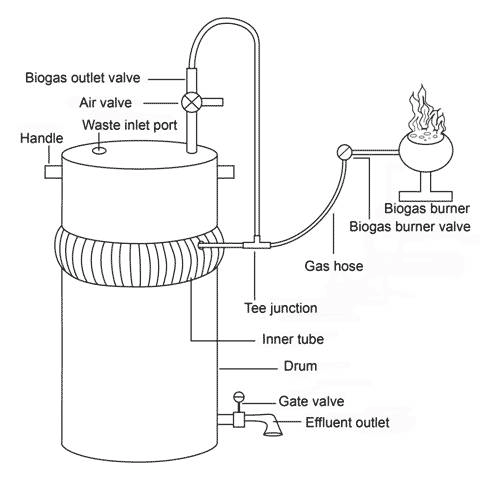How to motivate practical learning for sustainability Obayomi Oatunbosun Adeleke
According to Dr. Okonjo Iweala, the managing Director of World Bank, 550 million people in sub Saharan Africa have poor access to energy which in turn affects economic growth and poverty alleviation [1]. If we are to achieve the United Nations Millennium Development Goals (MDGs) to reduce poverty and its impacts, we need sustainable solutions that can be locally adapted and implemented. Biogas technology is indeed one solution that will help eradicate extreme hunger, alleviate poverty and maintain environmental integrity [2, 3] (see Biogas Bonanza for Third World Development SiS 27)
In my country Nigeria, we have come to see what’s usually considered waste as resources. Sustainable technology such as anaerobic digestion is relatively new. Though a lot of people have heard of it, practical implementation has been a problem as well as education.
I have had the opportunity to interact with and learn from professionals in the field such as Prof George Chan of Zero Emissions Initiatives, the designer of the integrated farming and waste management system (IFWMS) [3] (see Dream Farms, SiS 27). He has really inspired me.
I got the idea of introducing the biogas technology to schools in my neighborhood to educate the teachers and students and provide the school with a laboratory size biogas digester. This would be done through a school workshop and a practical project by the conversion of their classroom paper wastes into cooking gas (biogas)
I approached the principal, Mr. Paul, of Tonia International School in Coker, Lagos, and spoke to him about the idea. He accepted it immediately as a unique and innovative way of learning, though some staff were a bit skeptical as to how paper could be converted to cooking gas.
I was given the opportunity to speak to the students on the assembly ground where I also showed them a biogas digester I had already built that was functioning, in order to strengthen their faith in the technology.
In collaboration with the science teachers, interested students and teachers were asked to contribute 300 Naira (US$2.54) each for a package that includes a practical manual, workshop and a laboratory size biogas digester for the school. A total of 113 students and 7 teachers paid for the package.
I constructed a 0.05m3 capacity batch digester. It consisted of a 50-litre drum with a size 13 inner tube for gas storage and a laboratory burner, with associated connection accessories and utilities (see Fig. 1). The details of the construction as in the manual provided, as it was impossible to involve 120 students in the actual construction.

Figure 1. The biogas digester for class-room demonstration
We organized a workshop where the students learnt the basics of biogas technology and related it to biology, physics, chemistry and everyday life. It was amazing to hear these students ask funny but thoughtful questions. The manual I provided helped their comprehension. The science teachers asked them to write an essay about the biogas technology. This was marked and used as part of their continuous assessment results.
The students had gathered their paper wastes in class. Volunteer students were assigned to cut the paper, mix in the cow manure and put the mixture into the biogas digester. The mixture was then left to incubate. I used a starter from my already functioning biogas digester to speed up the process. This was because the project commenced 3weeks before the end of the term, and the students needed to see the gas burning before vacation. The inner tube was already filled with biogas in less than 2 weeks. NB: Care must be taken to discharge the first lot of gas, which will contain air, and could therefore cause an explosion when lit.
I lit the biogas for them in the science laboratory. They were all amazed and started asking questions all over again. It was fun interacting with them and they were really inspired.
The school now has a new laboratory equipment for teaching, which is applicable to chemistry, biology and agricultural science.
I intend to get this idea to all schools in Nigeria. I learnt a lot while implementing the digester, and have developed flow charts, and students and teachers manuals (for more details e-mail me: kulltubbie@yahoo.com).
I believe Nigeria can achieve the millennium development goals. We can get our people out of the “dynastic” cycle of poverty. One way is to start to educate the young people practically on how they can be active participants in this move.
The author is a 26 yrs old social entrepreneur, a graduate of Olabisi Onabanjo University in microbiology, and biotechnologist of BIO APPLICATIONS NIGERIA. He is a member of the American Society for Microbiology (ASM), Gateway Future Leaders forum, and an International field volunteer for One Village Foundation USA.
Article first published 08/09/08
Got something to say about this page? Comment